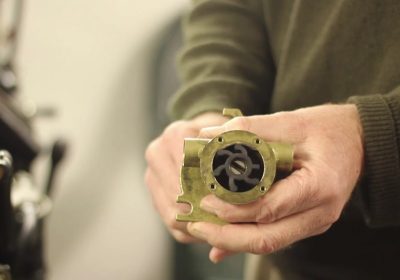All about Antifreeze Afloat…
The use of antifreeze in yacht cooling systems used to be simple – you just mixed the lurid green stuff 50:50 with water and chucked it in. You changed it every two years if you were feeling indulgent and the world was a simple, kindly place…
Then it all got complicated, and it really is complicated now. In the name of extended service intervals the manufacturers got all fancy and started messing with antifreeze.
Antifreeze basically has two components, three if you count the water. The actual non-freezing quality of antifreeze comes courtesy of glycol, either ethylene or propylene glycol. Ethylene glycol is toxic, propylene glycol is sufficiently inoffensive that it is approved for use as a food additive.
The other, vital component of antifreeze is the corrosion inhibitor package, and that is where the problem lies. Old-style antifreeze uses silicates as anti-corrosion additives. The problem is that these additives lose effectiveness over time and have to be renewed, typically every two years. The manufacturers wanted longer service intervals, much longer.
So a brave new world of long-life antifreeze was ushered in with the introduction of Organic Acid Technology (OAT). It didn’t go well at first. In the states GM introduced Dex-Cool which soon became known as Death-Cool, there were law-suits, there was pain and there was suffering.
However, fancy long-life antifreeze is everywhere now so somewhere along the line it has been made to work, at least in cars and trucks. Does that mean it is cool (!) to put it in your yacht cooling systems?
OAT antifreeze is designed to work with modern cars and trucks, vehicles that do not have brass/copper/solder in the cooling circuit. Modern vehicles have aluminium and plastic radiators and they have sealed cooling systems utilising a header or de-gas tank to keep air out of circulation.
So “what do I use in my boat” I hear you cry… Use what the manufacturer recommends is the first thing to say here. Assuming your engine came as a marine package with a heat exchanger fitted then stick with the manufacturer’s recommendations. If the manufacturer only recommends their own over-priced product (it’s a boat – right?) try to find the antifreeze specification to track down the right stuff and purchase through an automotive, agricultural or plant outlet. There are obvious warranty issues here if your engine is relatively new.
What if none of the above applies? Good question. Essentially ‘old-style’ non-OAT (sometimes called IAT – Inorganic Acid Technology) antifreeze is probably safer than modern OAT technology in the mixed-metal environment of a marine engine and its cooling system. From a materials perspective a boats heat exchanger can be likened to the old-style brass/copper/solder radiators in cars and trucks.
Maintenance intervals? Change the coolant every two years max. Antifreeze is cheap, engines not so much, it’s better to change the antifreeze than the engine… This is a great time to check the hoses, belts, raw water pump and heat exchanger for condition too. Heat exchangers accumulate muck over time and need flushing out.
For an article on how to achieve a deeper understanding of your vessel’s systems see Know your boat.



